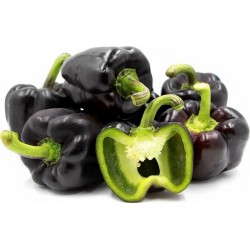Menu
-
MenuGeri
- Home
-
Kategoriler
-
-
Kategoriler
-
Sebze tohumları
-
Ülkelere Göre Çeşitler
- Ermenistan'dan çeşitler
- BH'den Çeşitler
- Hırvatistan'dan Çeşitler
- Fransa'dan Çeşitler
- Almanya'dan Çeşitler
- Yunanistan'dan Çeşitler
- Macaristan Çeşitleri
- Hindistan'dan Çeşitler
- İtalya'dan çeşitleri
- Japonya'dan Çeşitler
- Kuzey Makedonya çeşitleri
- Peru Çeşitleri
- Rusya'dan Çeşitler
- Sırbistan'dan Çeşitler
- Slovenya'dan Çeşitler
- İspanya Çeşitleri
- Tayland çeşitleri
- Türkiye'den Çeşitler
- ABD'den Çeşitler
- Domates tohumları
- Mısır tohumları
- Kabak ailesi
- Fasulye ailesi
- Salatalık tohumları
- Dolma biber tohumları
- Havuç ailesi
- Soğan ailesi
- Marul tohumları
- Patates ailesi
- Lahana ailesi
- Turp tohumları
- Pancar ailesi
- Karpuz tohumları
- Kavun tohumları
- Karnabahar tohumları
- Ayçiçeği ailesi
-
Ülkelere Göre Çeşitler
- Meyve tohumları
- Acı biber tohumları
- Tıbbi bitki tohumları
- Tırmanma bitki tohumları
- Ağaçlar - Çalı tohumları
- Palmiye tohumları
- Süs bitkileri tohumları
- Tütün tohumları
-
Sebze tohumları
-
-
-
-
- YENİ ÜRÜNLER
- Hesap oluştur
- Teslimat - Ödeme
- FAQ
Seeds Gallery markalı ürünlerin listesi
Seeds produced by Seeds Gallery
Seeds produced by Seeds Gallery
408 adet ürün var.
Sıralama ölçütü:
Toplam 408 üründen 385-396 arası gösteriliyor

Variety from Slovenia
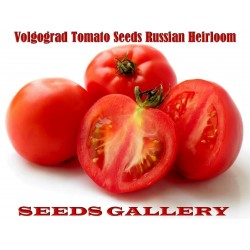
Volgograd Tomato Seeds...
Fiyat
€2,05
SKU: VT 140
Seeds Gallery Com,
5/
5
<h2><strong>Volgograd Tomato Seeds Russian Heirloom</strong></h2>
<h2><span style="color:#f60101;"><strong>Price for Package of 10 seeds.</strong></span></h2>
<p><span>Other Names for Tomato 'Volgograd' Volgograd Winter, Volvograd. 'Volgograd' is a Tomato variety in the Solanum genus with a scientific name of Solanum lycopersicum. 'Volgograd' is considered a heirloom OP (open polliated) cultivar.</span></p>
<p><span>65 days, bush habit, regular leaf, 2-5 oz oblate or round red fruit which may have green shoulders. no cracking, the plants are loaded with fruit, very good ‘old-fashioned’ tomato taste, early tomato. good for cool season, or cool areas.</span></p>
<p><span>Dislikes heat.</span></p>
<p><span>This variety is an Fruit that typically grows as an Annual/Perennial, which is defined as a plant that can matures and completes its lifecycle over the course of one year or more.</span></p>
<p><span>Volgograd Tomato is normally fairly low maintenance and is normally quite easy to grow, as long as a level of basic care is provided throughout the year. Being aware of the basic soil, sun and water preferences will result in a happier and healthier plant.</span></p>
<p><strong><span>Growing Volgograd from seed</span></strong></p>
<p><span>Start seeds indoors six weeks before last frost date.</span></p>
<p><span>By our calculations, you should look at sowing Volgograd about 42 days before your last frost date.</span></p>
<p><strong><span>Transplanting Volgograd</span></strong></p>
<p><span>Plant to the first set of true leaves to promote strong root growth.</span></p>
<p><span>Ensure that temperatures are mild and all chance of frost has passed before planting out, as Volgograd is a tender plant.</span></p>
<p><strong><span>Tomato Volgograd Etymology</span></strong></p>
<p><span>Volgograd Winter, aka Volgograd is from the Volgograd region of Russia.</span></p>
<p><span>“Winter” sometimes tacked on to the name Volgograd, because it does best in cool weather.</span></p>
VT 140 (10 S)


Amerika'dan çeşitli
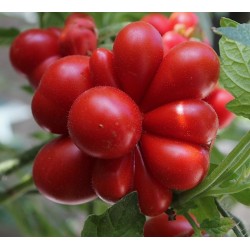
VOYAGE Tomato Seeds -...
Fiyat
€1,95
SKU: VT 86
Seeds Gallery Com,
5/
5
<h2 class=""><strong>VOYAGE Tomato Seeds - Heirloom Variety</strong></h2>
<h2><span style="color: #ff0000;"><strong>Price for Package of 10 seeds.</strong></span></h2>
<p>Voyage Tomato is about as strange-looking tomato as you will find. The voyage tomato is an old Indian heirloom variety from Central America. It owes its name to the fact that, due to its unusual fruit form, it is ideally suited as food for travel. The name voyage comes from the idea that you can take it on a voyage and not have to eat the whole fruit. Pulling sections off and eating them as you need it.</p>
<p>Indeterminate, regular leaf, sprawling plants produce very unusually, 120 grams, red, lumpy and beautiful tomatoes.</p>
<p>Don't miss this fantastic strange variety for your garden this year...</p><script src="//cdn.public.n1ed.com/G3OMDFLT/widgets.js"></script>
VT 86

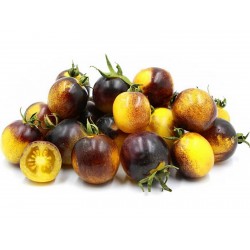
Wagner Blue Yellow Tomato...
Fiyat
€1,65
SKU: VT 13
Seeds Gallery Com,
5/
5
<h2 class=""><strong>Wagner Blue Yellow Tomato Seeds</strong></h2>
<h2><span style="color: #ff0000;"><strong>Price for Package of 10, 20, 50 seeds.</strong></span></h2>
<p>This rare and beautiful tomato comes from the breeder Tom Wagner. Wagner Blue Yellow is a rare eye-catching tomato that is bright yellow, with dark blue marbled shoulders. They develop the blue-purple color as they grow, and the more sun that each tomato receives, the deeper that color becomes. Wagner Blue Yellow is a small salad-type tomato, though still larger than a cherry tomato at about <strong>5-6 cm in size and 50-90 grams of weight</strong>, and it has a mild, almost citrusy flavor with an appealing juicy texture. The fruits ripen after 60 to 70 days. Wagner Blue Yellow tomato plants can grow to an <strong>average of 180 cm</strong>, and they produce abundant yields of the round fruit throughout the season right up until frost.</p>
<p>Wagner Blue Yellow is not to be confused with the <a href="https://www.seeds-gallery.shop/en/home/blue-tomato-seeds-bosque-blue.html" title="Blue Tomato Seeds "Bosque Blue"" target="_blank" rel="noreferrer noopener"><strong>bosque blue tomato</strong></a>, which is a totally different variety that was released by the same farm in 2011. Wagner Blue Yellow has also been offered under the name Purple Yellow Light Bulb.</p>
<p>Wagner Blue Yellow tomatoes are great for fresh snacking, and their unique look makes them a great addition to salads. They can be used in fresh salsas...</p>
<p>Blue tomatoes like Wagner Blue Yellow are purposefully bred in the United States for the health benefits of their anthocyanin content. Until the 21st century, tomatoes grown in home gardens have had the beneficial pigment only in their leaves and stems, which are inedible, while only a few wild tomato species had anthocyanins in their fruit.</p><script src="//cdn.public.n1ed.com/G3OMDFLT/widgets.js"></script>
VT 13 (10 S)

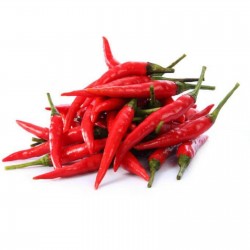
Wasp Hot Chili Seeds
Fiyat
€2,45
SKU: C 13 (0,3g)
Seeds Gallery Com,
5/
5
<h2 class=""><strong>Wasp Hot Chili Seeds</strong></h2>
<h2><span style="color: #ff0000;"><strong>Price for Package of 100+- seeds (0,3g).</strong></span></h2>
<p>Beautiful Chili, belongs to the group chili peppers with the high ingredient of capsaicin, whereby the fruits are extraordinary hot. It forms a short stalk, numerous branches, giving the plant a bushy appearance. The fruits are 3-4 cm long, green in the technological and red in the biological maturity. By regular harvest you can get 350-400 fruits. Due to the decorative appearance and large number of fruits, this plant is suitable for growing in pots on the terraces and balconies as a decorative plant.</p><script src="//cdn.public.n1ed.com/G3OMDFLT/widgets.js"></script>
C 13 (0,3g)

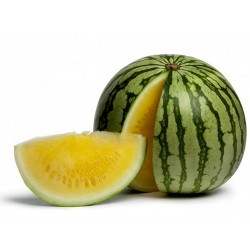
Watermelon Yellow Flesh...
Fiyat
€1,85
SKU: V 44
Seeds Gallery Com,
5/
5
<h2>Watermelon Yellow Flesh Seeds - Super Sweet</h2>
<h2><span style="color: #ff0000;"><strong>Price for Package of <strong></strong></strong></span><span style="color: #ff0000;"><strong>5 or 10 </strong></span><span style="color: #ff0000;"><strong><strong></strong>seeds.</strong></span></h2>
<div>Watermelon Yellow Flesh is an unusual and very attractive watermelon.</div>
<div>This highly prized variety which has pure yellow flesh inside not only tastes great, it looks fabulous as well, the perfect complement to the standard red fleshed types such as Sugar Baby.</div>
<div>The flesh which is very sweet sometimes gives the impression of being bland but this is only because of the colour.</div>
<div>Watermelon Yellow Flesh produces firm, good quality and evenly shaped fruit on a bushy plant.</div>
<div>Heavy for their size the melons which can weigh anything from 3.5 - 5.5 kilos have a superb watermelon flavour and are highly rated in their native Poland.</div>
<div>Can be cultivated outdoors but gives best results in the British Isles when grown under protection.</div>
<div>
<table cellspacing="0" cellpadding="0" border="1">
<tbody>
<tr>
<td colspan="2" width="100%" valign="top">
<p><span style="color: #008000;"><strong>Sowing Instructions</strong></span></p>
</td>
</tr>
<tr>
<td valign="top" nowrap="nowrap">
<p><span style="color: #008000;"><strong>Propagation:</strong></span></p>
</td>
<td valign="top">
<p><span style="color: #008000;">Seeds</span></p>
</td>
</tr>
<tr>
<td valign="top" nowrap="nowrap">
<p><span style="color: #008000;"><strong>Pretreat:</strong></span></p>
</td>
<td valign="top">
<p><span style="color: #008000;">Damage the membranes of the seed. But not the sprouts! See Picture 3</span></p>
</td>
</tr>
<tr>
<td valign="top" nowrap="nowrap">
<p><span style="color: #008000;"><strong>Stratification:</strong></span></p>
</td>
<td valign="top">
<p><span style="color: #008000;">0</span></p>
</td>
</tr>
<tr>
<td valign="top" nowrap="nowrap">
<p><span style="color: #008000;"><strong>Sowing Time:</strong></span></p>
</td>
<td valign="top">
<p><span style="color: #008000;">all year round</span></p>
</td>
</tr>
<tr>
<td valign="top" nowrap="nowrap">
<p><span style="color: #008000;"><strong>Sowing Depth:</strong></span></p>
</td>
<td valign="top">
<p><span style="color: #008000;">0,5-1 cm</span></p>
</td>
</tr>
<tr>
<td valign="top" nowrap="nowrap">
<p><span style="color: #008000;"><strong>Sowing Mix:</strong></span></p>
</td>
<td valign="top">
<p><span style="color: #008000;">Coir or sowing mix + sand or perlite</span></p>
</td>
</tr>
<tr>
<td valign="top" nowrap="nowrap">
<p><span style="color: #008000;"><strong>Germination temperature:</strong></span></p>
</td>
<td valign="top">
<p><span style="color: #008000;">Opt. 38 ° C</span></p>
</td>
</tr>
<tr>
<td valign="top" nowrap="nowrap">
<p><span style="color: #008000;"><strong>Location:</strong></span></p>
</td>
<td valign="top">
<p><span style="color: #008000;">bright + keep constantly moist not wet</span></p>
</td>
</tr>
<tr>
<td valign="top" nowrap="nowrap">
<p><span style="color: #008000;"><strong>Germination Time:</strong></span></p>
</td>
<td valign="top">
<p><span style="color: #008000;">1-6 weeks</span></p>
</td>
</tr>
<tr>
<td valign="top" nowrap="nowrap">
<p><span style="color: #008000;"><strong>Watering:</strong></span></p>
</td>
<td valign="top">
<p><span style="color: #008000;">Water regularly during the growing season</span></p>
</td>
</tr>
<tr>
<td valign="top" nowrap="nowrap">
<p><span style="color: #008000;"><strong> </strong></span></p>
</td>
<td valign="top">
<p><br /><span style="color: #008000;"><em>Copyright © 2012 Seeds Gallery - Saatgut Galerie - Galerija semena. </em><em>All Rights Reserved.</em></span></p>
</td>
</tr>
</tbody>
</table>
</div>
V 44 (5 S)


Amerika'dan çeşitli

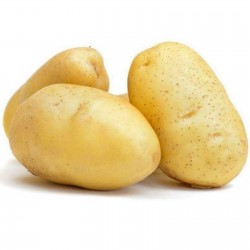
White Skin - White Flesh...
Fiyat
€1,95
SKU: P 247 WK
Seeds Gallery Com,
5/
5
<h2><strong>White Skin - White Flesh KENNEBEC Potato Seeds</strong></h2>
<h2><span style="color:#ff0000;"><strong>Price for Package of 10 seeds.</strong></span></h2>
<p>These white-skinned and white flesh tubers make excellent table potatoes. The fairly firm texture when boiled. They are highly recommended for fries and chips. Plants are compact and erect with pointed smooth leaves and; numerous big white flowers with slight reddish-purple tinge on backs.</p>
<p>Potatoes can be grown from true seeds just as easily and reliably as tomatoes, peppers or eggplants. True potato seed is a new development offering the advantages of, lower cost than mini-tubers, completely disease-free, and always available at the right planting time for gardeners in any region. This is the new wave in potato culture.</p>
<p>Start indoors in seedling trays. Fill each cell to 1cm (1/2") from the top with sterilized seed starting mix. Moisten with water and place one seed on the top of the soil per cell. Cover with vermiculite and water in. Note: Potato seeds require light to germinate, so do not bury. Optimal soil temperature for germination: 15-27°C (65-80°F). Seeds should germinate in 6-10 days.</p>
<p><strong>Starting</strong><br />Keep the soil evenly moist during germination, but allow free drainage so that excess water does not collect. Water before mid-day to allow foliage to dry completely by nightfall. Potato seedlings <span>tend to stay prostrate immediately after emergence if they have 13 or more hours of daylight. As a somewhat longer stem is desired to ease transplanting, keep seedlings in about 12-hour light per day. During the last week expose seedlings to full sunlight to strengthen the stem. At optimal temperature, transplants will be ready 4 to 6 weeks after seeding.</span></p>
<p><span>If field conditions are very different from indoor conditions, allow one week of hardening off. Water the plugs heavily the day before and day of the transplant, and transplant into moist soil.</span></p>
<p><strong>Growing</strong><br />Ideal pH: 5.0-6.0. Plant seedlings so that only the crown of its top, 2-5cm (1-2“) is above soil level, burying the whole plug and a good part of the stem of the seedling. Seedlings cannot be completely buried, the growing point needs to stay above ground. Space seedlings 10-25cm (4-10") apart in rows 75cm (30") apart. Wider spacing produces fewer, but larger tubers. Keep the area well-watered for several weeks after transplant.</p>
<p><strong>Hilling<br /></strong><span>When seedlings reach 10-15cm (4-6") in height, they should be hilled, probably three weeks after transplanting. This operation takes soil from the centre of the row, and covers the seedlings up to half of their height, creating a small hill. It is best to work from the centre of the furrow towards the plants. Do not cut too deep into the soil near the plant to avoid root damage. Just before hilling, fertilizer can be applied near the base of the seedlings, and this will be covered when hilling.</span></p>
<p>A second hilling and side dressing of balanced organic fertilizer should follow 3-4 weeks after the first, again depositing soil up to half the height of the plants. Again, increase the depth of the furrow in its centre and bring this soil on top of the small hill created in the first hilling operation.</p>
<p><strong>Harvest</strong></p>
<p><span>In the garden, potatoes can be harvested without destroying the plant if only a few potatoes are needed. Carefully scrape soil near the base of the stem until the skin of a potato is found, and pull it from the stolon. Consume it that day for a tasty and nutritious meal. </span>If potatoes need to be stored for some time, remove the foliage 3 weeks before harvest. This "sets" (hardens) the skin, and it will store better as the thicker skin will reduce water loss from the tubers. Keep them dark up to 2 to 3 months at high humidity before eating.</p>
<p><strong>Seed Info</strong><br />In optimal conditions, at least 75% of the seeds will germinate. Usual seed life: 3 years. Per 100′ row: 200 seeds, per acre: 8.8M seeds.</p>
<p><strong>Diseases & Pests</strong><br />Protect from cabbage moths and other insect pests with floating row cover. Prevent disease with a strict 4-year crop rotation, avoiding planting Brassicas in the same spot more than once every four years.</p>
<p><strong>Companion Planting</strong><br />A worthy companion for beets, Brassicas, cucumbers, and onions. Avoid planting near peppers, pole beans, strawberries, and tomatoes.</p>
P 247 WK

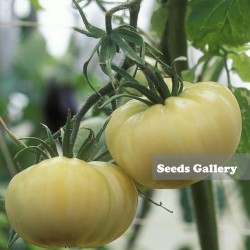
White Wonder Tomato Seeds
Fiyat
€2,30
SKU: VT 29
Seeds Gallery Com,
5/
5
<h2><strong>White Wonder Tomato Seeds Great Taste Heirloom</strong></h2>
<h2><span style="color:#ff0000;"><strong> Price for Package of 5 or 10 seeds.</strong></span></h2>
<p>White Wonder tomatoes are creamy-white oblate shaped beefsteak tomatoes that weigh about 1 kg (2 pounds). The meaty flesh has few seeds and is also yellowish-white in color with high sugar content and low acidity, creating an exceptionally sweet melon-like flavor. The bushy indeterminate plants grow to an average of 1,5 meters (5 feet) tall, and they have good foliage cover to protect the fruit. As an indeterminate variety, the White Wonder tomato plant will continue to grow and produce good yields of the large tomatoes throughout the season right up until frost.</p>
<p>White Wonder is a beefsteak-type tomato, characterized by large, heavy fruit and thick, meaty texture. Tomatoes are members of the Solanaceae or nightshade family and they are botanically known as either Lycopersicon esculentum or Solanum Lycopersicum, as new DNA evidence has led some horticulturists to re-adopt the original classification. Like all heirlooms, White Wonder is an open-pollinated cultivar, meaning that saved seed being passed down through family generations grows true to the original parent type.</p>
<p>White Wonder tomatoes have a high sugar level and are deliciously sweet, making them great for fresh eating. They add a beautiful contrast to veggie trays alongside other colored tomato varieties. As a beefsteak-type tomato, they are great for slicing onto sandwiches, burgers, and salads, and they are also a good variety for canning. Try using them to make white tomato soup or white tomato sauce. Tomatoes pair well with savory herbs and soft cheeses, and they can also be combined with sweet herbs, like mint. Store White Wonder tomatoes at room temperature until fully ripe, after which refrigeration can slow the process of decay.</p>
<p>White Wonder tomatoes were brought into the spotlight when they became one of the varieties chosen for Alice Waters’ famous Chez Panisse restaurant in Berkeley, California. Chez Panisse opened its doors in 1971 and is known for sourcing ingredients that are organically and locally grown and ecologically harvested to protect the land for future generations.</p>
<p>Geography/History<br />The White Wonder tomato is an old American heirloom believed to date back as far as pre-1860. Some even suspect that Thomas Jefferson planted this variety at his home in Monticello. Like all tomatoes, White Wonder tomatoes cannot stand any frost, and they are sensitive to low night temperatures. They are said to do best in USDA hardiness zones 3-9.</p>
<p>HEIRLOOM TOMATO: Heirloom Tomatoes are just what their name implies. They have been handed down, through generations of farmers and gardeners, from family member to family member. Many of these tomato varieties are known to have thrived since the 1800’s.</p>
<p>Unlike hybrids, they are not selectively bred for taste or appearance. They are open-pollinated, growing ‘true to type’ plants, like their predecessors, from seed. Heirloom Tomato Plants will add untraditional color and pleasing variety to your garden harvest.</p>
VT 29 (10 S)

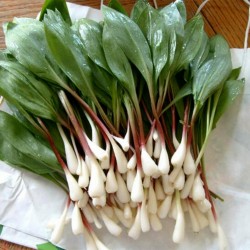
Wild Garlic, Bear's Garlic...
Fiyat
€2,35
SKU: MHS 15
Seeds Gallery Com,
5/
5
<h2 class=""><strong>Wild Garlic, Bear's Garlic Seeds (Allium ursinum)</strong></h2>
<h2><span style="color: #ff0000;"><strong>Price for Package of 10 or 50 (0.288g) seeds.</strong></span></h2>
<p>Allium ursinum – known as ramsons, buckrams, wild garlic, broad-leaved garlic, wood garlic, bear leek, or bear's garlic – is a wild relative of chives native to Europe and Asia. The Latin name is due to the brown bear's taste for the bulbs and its habit of digging up the ground to get at them, they are also a favourite of wild boar. In Europe, where ramsons are popularly harvested from the wild, similarity to poisonous plants such as lily of the valley or Colchicum autumnale regularly leads to cases of poisoning.</p>
<p>Allium ursinum is a bulbous, perennial herbaceous monocot, that reproduces primarily by seed. The narrow bulbs are formed from a single leaf base and produce bright green entire, elliptical leaves up to 25 cm long x 7 cm wide with a petiole up to 20 cm long. The inflorescence is an umbel of six to 20 white flowers only, lacking the bulbils produced by some other Allium species such as Allium vineale (crow garlic) and Allium oleraceum (field garlic). :394 :902 The flowers are star-like with six white tepals, about 16–20 mm in diameter, with stamens shorter than the perianth.</p>
<p>It flowers in the British Isles from April to June, :394 starting before deciduous trees leaf in the spring. The flower stem is triangular in cross-section and the leaves are broadly lanceolate similar to those of the lily of the valley (Convallaria majalis).</p>
<p><strong>Distribution</strong></p>
<p>It is native to temperate regions of Europe, from Britain east to the Caucasus. It is common in much of the lowland British Isles with the exception of the far north of Scotland, Orkney, Shetland, and the Channel Islands.</p>
<p><strong>Habitat</strong></p>
<p>A. ursinum is widespread across most of Europe. It grows in deciduous woodlands with moist soils, preferring slightly acidic conditions. In the British Isles, colonies are frequently associated with bluebells (Hyacinthoides non-scripta), especially in ancient woodland. It is considered to be an ancient woodland indicator species</p>
<p><strong>Edibility</strong></p>
<p>The leaves of A. ursinum are edible; they can be used as salad, herb, boiled as a vegetable, in soup, or as an ingredient for a sauce that may be a substitute for pesto in lieu of basil. The stems are preserved by salting and eaten as a salad in Russia. A variety of Cornish Yarg cheese has a rind coated in wild garlic leaves. The bulbs and flowers are also edible. It is used for preparing herbed cheese, a Van speciality in Turkey.</p>
<p>The leaves are also used as fodder. Cows that have fed on ramsons give milk that tastes slightly of garlic, and butter made from this milk used to be very popular in 19th-century Switzerland.</p>
<p>The first evidence of the human use of A. ursinum comes from the Mesolithic settlement of Barkær (Denmark), where an impression of a leaf has been found. In the Swiss Neolithic settlement of Thayngen-Weier (Cortaillod culture), a high concentration of pollen from A. ursinum was found in the settlement layer, interpreted by some as evidence for the use of A. ursinum as fodder.</p>
<p><strong>Similarity to poisonous plants</strong></p>
<p>The leaves of A. ursinum are easily mistaken for lily of the valley, sometimes also those of Colchicum autumnale and Arum maculatum. All three are poisonous. Grinding the leaves between the fingers and checking for a garlic-like smell can be helpful, but if the smell remains on the hands, one can easily mistake a subsequent poisonous plant for bear garlic. When the leaves of A. ursinum and Arum maculatum first sprout, they look similar but unfolded Arum maculatum leaves have irregular edges and many deep veins, while ramsons leaves are convex with a single main vein. The leaves of lily of the valley are paired, dull green and come from a single reddish-purple stem, while the leaves of A. ursinum emerge individually and are bright green.</p>
<h3><strong>Sowing:</strong></h3>
<p>Sow in late winter/late spring and late summer/autumn. The seeds need moist loamy soil with a damp shady environment. Sow either in situ or in a cold frame. It takes 200 seeds per square meter.</p>
<h3><strong>Sowing Indoors:</strong></h3>
<p>Wild Garlic sets seed profusely and germinates well. Plants should be large enough for planting out by the third year.</p>
<h3><strong>Sowing Direct:</strong></h3>
<p>Scatter the seed on bare soil under trees. Lightly roll the soil but do not rake over. Seeds can be sown at a rate of up to 200 seeds per square meter.</p><script src="//cdn.public.n1ed.com/G3OMDFLT/widgets.js"></script>
MHS 15 (10 S)

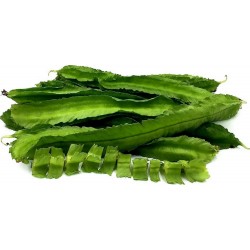
WINGED BEAN Seeds...
Fiyat
€2,20
SKU: VE 186
Seeds Gallery Com,
5/
5
<meta http-equiv="Content-Type" content="text/html; charset=UTF-8" />
<div id="idTab1" class="rte">
<h2 id="short_description_content"><strong>WINGED BEAN Seeds (Psophocarpus tetragonolobus)</strong></h2>
<h2><span style="color: #f70000;"><strong>Price for Package of 5 seeds.</strong></span></h2>
<p>The winged bean (Psophocarpus tetragonolobus), also known as the Goa bean, asparagus pea, four-angled bean, four-cornered bean, Manila bean, Mauritius bean, and winged pea, is a tropical legume plant native to New Guinea. It grows abundantly in hot, humid equatorial countries, from the Philippines and Indonesia to India, Burma, Thailand and Sri Lanka. It is widely known, yet grown on a small scale in Southeast Asia and Papua New Guinea. Winged bean is well-recognized by farmers and consumers in the Asian region for its variety of uses and disease tolerance. Winged bean is nutrient-rich, and all parts of the plant are edible. Leaves can be eaten like spinach, flowers can be used in salads, tubers can be eaten raw or cooked, seeds can be used in similar ways as the soybean. The winged bean is an underutilized species but has the potential to become a major multi-use food crop in the tropics of Asia, Africa and Latin America.</p>
<p> </p>
<p>The winged bean is a species that belongs to the genus Psophocarpus, a genus of 6-9 varying species. Species in the Psophocarpus genus are perennial herbs grown as annuals. They are generally considered to be from Africa. Species in the Psophocarpus species are capable of climbing by twining their stems around a support. Species in the Psophocarpus genus have tuberous roots and pods with wings.</p>
<p> </p>
<p><strong>Appearance</strong></p>
<p>The winged bean plant grows as a vine with climbing stems and leaves, 3–4 m in height. It is an herbaceous perennial, but can be grown as an annual. It is generally taller and notably larger than the Common bean. The bean pod is typically 15–22 cm (6–9 in) long and has four wings with frilly edges running lengthwise. The skin is waxy and the flesh partially translucent in the young pods. When the pod is fully ripe, it turns an ash-brown color and splits open to release the seeds. The large flower is a pale blue. The beans themselves are similar to soybeans in both use and nutritional content (being 29.8% to 39% protein).</p>
<p> </p>
<p>There is abundant variation in the appearance of winged bean. The shape of its leaves ranges from ovate, deltoid, ovate-lanceolate, lanceolate and long lanceolate. The leaves of winged bean also vary in colour appearing as different shades of green.</p>
<p> </p>
<p>Stem colour is commonly green, but can vary from shades of green to shades of purple.</p>
<p> </p>
<p>Pod shape is most commonly rectangular, but can also appear flat. Pod colour may also vary from shades of cream, green, pink or purple. The exterior surface of the pod also varies in texture. Pods can appear smooth or rough depending on genotype. Seed shape is often round, but oval and rectangular seeds are also found. Seed colour changes based on environmental factors and storage conditions. Seeds may appear white, cream, brown or dark tan in appearance. The shape of winged bean tuberous roots also show variation.</p>
<p> </p>
<p><strong>Human consumption and nutrition</strong></p>
<p>One of the advantages of the winged bean is its ability to produce food from many different parts of the plant.</p>
<p> </p>
<p>Pods- Can be eaten unripe as a crunchy vegetable, cooked or raw</p>
<p> </p>
<p>Seeds- Require cooking for 2–3 hours to destroy trypsin inhibitors and hemagglutinins that inhibit digestion.[4] Seeds can be roasted like peanuts and have nutrient value comparative to soy beans. Average about 35% protein and 17% oil.</p>
<p> </p>
<p>Roots-Can be eaten raw or cooked. Tubers are high in protein and nutrient rich. Tuberous roots have 20% protein, which is much higher than other edible roots.</p>
<p> </p>
<p>Leaves and Flowers- Can be eaten raw or cooked. Flowers and leaves also have a high protein content at 10-15%.</p>
<p> </p>
<p><strong>Germination</strong></p>
<p>Winged bean is a self-pollinating plant but mutations and occasional outcrossing, may produce variations in the species. The pretreatment of winged bean seeds is not required in tropical climate, but scarification of seeds has shown to enhance the germination rate of seedlings. Seed soaking may also increase speed to germination, as is typical, and may be used in conjunction with scarification. Seedlings under natural field conditions have been reported to emerge between 5–7 days.</p>
<p> </p>
<p>It is recorded that winged bean can grow as fast or faster than comparative legume plants including soybeans. There is a 40-140 day period of germination from sowing to flowering of the winged bean plant. The pod reaches its full length and can be gathered to use as a vegetable 2 weeks after pollination. Three weeks after pollination, the pod becomes fibrous and after six weeks mature seeds can be harvested. Tuber development and flower production are dependent upon genotype and environmental factors. Some varieties of winged bean do not produce tuberous roots. The winged bean is a tropical plant, and will only flower when the day length is shorter than 12 hours, though some varieties have been reported as day-length neutral. All varieties of winged bean grow on a vine and must grow over a support. Some examples of support systems include: growing against exterior walls of houses, huts, buildings; supporting against larger perennial trees; stakes placed in the ground vertically; and structures made from posts and wires.</p>
<p> </p>
<p>Because the early growth of winged bean is slow, it is important to maintain weeds. Slow early growth makes winged bean susceptible to weed competition in the first 4–6 weeks of development. Khan (1982) recommends weeding by hand or animal drawn tractor two times before the support system of the winged bean is established.</p>
<p> </p>
<p>Winged bean can be grown without added fertilizer as the plant has a bacterium on the nodules of the roots that fixes nitrogen and allows the plant to absorb nitrogen. Factors that influence nitrogen fixation include, Rhizobium strain, interactions between strain and host genotype, available nutrients and soil pH.</p>
<p> </p>
<p><strong>Climate</strong></p>
<p>Winged bean thrives in hot weather and favours humidity, but it is an adaptable plant. It is reported that the winged bean can adjust to the climate of the equatorial tropics. Winged bean production is optimal in humidity, but the species is susceptible to moisture stress and waterlogging. Ideal growing temperature is reported to be 25 degrees Celsius. Lower temperature is reported to suppress germination, and extremely high temperatures are detrimental to the yield of the plant.</p>
<p> </p>
<p>Moderate variations in the growing climate of winged bean can result in variations in yield. It is reported than growing winged bean in lower than favourable temperatures can increase tuber production. It is also reported that leaf expansion rate is higher in a warmer climate. In addition to adequate temperature, winged bean requires sufficient soil moisture at all stages of growth to produce high yields. Although the winged bean plant is indigenous to the humid tropics, it is possible for the plant to succeed in drier climate with plenty of irrigation. Success has been noted when the maturity of the plant and the drier part of the growing season correspond.</p>
<p> </p>
<p>The hot, humid, and relatively wet summers of the Mid-Atlantic/Northeast are sufficient to raise the plant to crop, though the shorter growing season and day-length flowering issues will restrict the timing and amounts of yields.</p>
<p> </p>
<p><strong>Uses</strong></p>
<p>This bean has been called the "one species supermarket" because practically all of the plant is edible. The beans are used as a vegetable, but the other parts (leaves, flowers, and tuberous roots) are also edible. The tender pods, which are the most widely eaten part of the plant (and best eaten when under 1" in length), can be harvested within two to three months of planting. The flowers are often used to color rice and pastries. The flavor of the beans has a similarity to asparagus. The young leaves can be picked and prepared as a leaf vegetable, similar to spinach. The roots can be used as a root vegetable, similar to the potato, and have a nutty flavor; they are also much richer in protein than potatoes. The dried seeds can be useful as a flour and also to make a coffee-like drink. Each of these parts of the winged bean provide a source of vitamin A, vitamin C, calcium, iron, and other vitamins. The seeds contain 35% protein and 18% oil.</p>
<p> </p>
<p><strong>Potential</strong></p>
<p>The winged bean is rich in protein and tocopherol, an antioxidant that increases vitamin A use in the body (National Research Council (U.S), 1975). Its ability to grow in heavy rainfall makes the species a good candidate to adequately nourish the people of tropical equatorial countries in Africa. The wing bean can also be used to produce winged bean milk made from water, winged beans, and emulsifier. Winged bean milk has similar characteristics as soymilk without the same bean-rich flavour. Winged bean has also been reported as an effective remedy for smallpox and as a cure for vertigo in Malaya.</p>
<p> </p>
<p>The winged bean also provides many opportunities for economic benefit. Many parts of the winged bean can be sold. Mature seeds can bring in a high price . There is evidence of smoked pods, uncooked tubers, cooked tubers, dry seeds, and leaves being sold in domestic markets in South East and South Asia. Winged bean also has the potential to be used as animal feed for livestock and poultry. The winged bean also has the potential to be used as a replacement for fish meal used to raise African catfish (Clarias gariepinus), a highly valued food fish in Africa. Feeding fish represents a large portion of operating cost for fish farmers and fishmeal is scarce and high-priced. Winged bean can be used as the primary protein source for fish feed to reduce farmer dependence on fish meal availability.</p>
<p> </p>
<p>Winged bean also shows potential as a cover crop and a restorative crop. Planting winged bean uniform with the ground can reduce weeds and function well as a cover crop. The winged bean can also function effectively as a restorative crop that can improve nutrient poor soil with nitrogen when it is turned over into the soil.</p>
</div>
VE 186 (5 S)

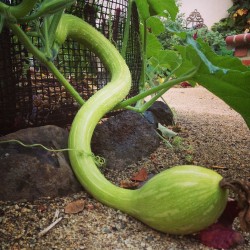
Winter squash Seeds...
Fiyat
€2,35
SKU: VG 10
Seeds Gallery Com,
5/
5
<!DOCTYPE html>
<html>
<head>
<meta http-equiv="Content-Type" content="text/html; charset=UTF-8" />
</head>
<body>
<h2><strong>Winter squash Seeds TROMBETTA DI ALBENGA</strong></h2>
<h2><span style="color: #ff0000;"><strong>Price for Package of 3 seeds.</strong></span></h2>
<p>Trombetta di Albenga is an Italian heirloom climbing winter squash.</p>
<p>It’s a highly valuable variety, with a delicate flavor.</p>
<p>The plant is a strong climber, with broad leaves, its fruits are thin, slightly crooked, trumpet-shaped, the skin is pale green when unripe and yellow when ripe.</p>
<p>Fruits can grow up to 1 m long, weighing as much as 5kg, but they are usually harvested when 20-30 cm long and used as courgettes. If harvested when 10-15 cm long they are very tender and can be eaten raw. The flesh of the ripe fruits is cooked to prepare puree, soups, ravioli stuffing or cakes. Seeds can be eaten lightly toasted and salted.</p>
<p>Produces long, slender, white to pale yellow, 15-inch fruit with a bulb at the bottom. Picked while young and tender, they are delicious and sweet as summer squash. If allowed to mature, this is also great as winter squash. As winter squash, it is used for stuffing in gnocchi and ravioli, & for baking and pies!</p>
<p>The mature fruit grows very long. Because of their unique shape and delicious flavor, they are in very high demand at specialty markets but can be a pain to store, for the same reason.</p>
<p>Trombetta di Albenga grows as an Annual and is a Vegetable. Being an Annual, it tends to grow best over the course of a single year. Trombetta di Albenga is known for its Vine habit and growing to a height of approximately 2.00 meters (6.50 feet). Expect to bloom to occur in early summer.</p>
<p>Italy is believed to be where Trombetta di Albenga originates from.</p>
<p>This plant tends to need a moderate amount of maintenance, so ensuring that you are aware of the soil, sun, ph and water requirements for Trombetta di Albenga Winter squash is quite important to ensure you have a happy and healthy plant.</p>
</body>
</html>
VG 10 (3 S)


Bosna Hersek çeşidi
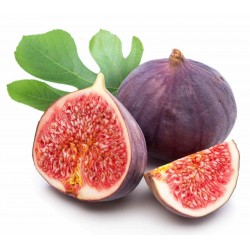
Yabani İncir tohumları...
Fiyat
€1,85
SKU: V 19 WF
Seeds Gallery Com,
5/
5
<!DOCTYPE html>
<html>
<head>
<meta http-equiv="Content-Type" content="text/html; charset=UTF-8" />
</head>
<body>
<h2><strong>Yabani İncir tohumları (Hersek'ten)</strong></h2>
<h2><span style="color: #ff0000;"><strong>20 tohumların Paketi için fiyat.</strong></span></h2>
<p>Bu inciri Herzegovina'dan getirdik ve dağlarda vahşi doğada bulduk. Yaşam alanı kayalık ve kuruydu, bu da kötü toprak koşullarına dayanıklı olduğu anlamına geliyor. O kısımda da sürekli kuraklıklar var ve bitkinin fazla su almamasına rağmen büyümesini hiç rahatsız etmedi. Meyveleri diğer incir çeşitlerinden daha küçüktür ve olgunlaştığında koyu mordur. Meyveleri küçük olmasına rağmen çok lezzetli ve tatlıdır. Güvenilir kaynaklardan aldığımız yerde sıcaklığın kışın -15C'ye düştüğünü öğrendik.</p>
<p>İncir çiçeklerinin fark edilmesi zordur çünkü incirin içinde büyürler ve bu tür çiçekler sözde tarafından tozlanır. Yabani incirin meyvelerinde gelişen incir eşekarısı. Uysal ve yabani incir arasındaki fark, uysal incirin sadece dişi çiçeklerle çiçek açması, yabani incirin dişi ve erkek çiçekleri olmasıdır.</p>
<p>Yabani incir, evcil olanlara kıyasla anormal bir oranda büyür.</p>
</body>
</html>
V 19 WF (20 S)


